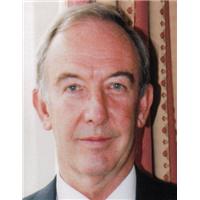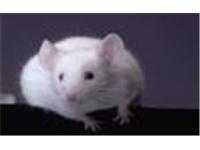These are the latest non-surgical procedures: fillers made of natural substances, lasers and intensive vitamin therapies that improve the appearance of the skin and are a viable alternative to cosmetic surgery or with surgery to obtain the best possible results.
These procedures, whilst not invasive, should be carried out by a qualified medical doctor or by a nurse under the supervision of a doctor.
BIOSKIN JETTING
BioSkinJetting is a new alternative to injecting solutions into the skin. BioSkinJetting uses a microprobe, to seperate the skin where the wrinkle is from the skin below. This action stimulates the skin to form new collagen fibres, plumping and firming the skin to create a smoother and, for many, wrinkle free complexion. Each treatment lasts between 15 to 40 minutes and is offered as part of a course of 5-7 treatments costing between $60and $150 each, making it very comparable to current injectable prices, without the potential risks. A further bonus is that, unlike other treatments, the facial muscles can move freely and are not frozen, making the overall impression much more natural, yet younger looking.
Details of practitioners from www.skinbysterex.com
www.bioskinjetting.com
BOTOX
Botox was first used to treat neurological conditions, such as facial spasms. It come into use as a cosmetic treatment more than years ago and is used for crow’s feet, forehead and frown lines. Botox and Dysport are the trade names for Botulinum toxin, which is produced by the bacterium Clostridium botulinum. Botulinum type A, which is used commercially, is the most potent. Botox acts by blocking acetylcholine, a chemical that is responsible for transmitting the electrical impulses that cause muscle contraction. This results in muscle paralysis, but only temporarily, as the new growth of nerves re-innervates the muscles.
Botox is injected in highly diluted doses into the belly of the muscle using a small needle. This causes it to relax, which softens lines and contours. The most popular areas to have treated are crow’s-feet, forehead lines, neck muscles, the corners of the mouth and upper lip lines. Several injections are usually needed at specific sites, depending on the area treated. It takes a few days to take effect and lasts for about three months. It should only be administered by doctors or a nurse supervised by a doctor. It costs about $440 for each area treated.
Although its use is approved by most health authorities no study of the long-term effects has been made. It should not therefore be used by pregnant or breast-feeding women, anyone with neuromuscular disorders or people taking certain muscle relaxants.
In the UK, Botox is not licensed for cosmetic procedures . It is only licensed to treat squinting, facial and neck muscle spasms, cerebral palsy and excessive sweating.
Practitioners:
LONDON
Patrick Bowler, 30b Wimpole Street,London W1 T: 0870 850 3456 www.courthouseclinic.com
BUCKINGHAMSHIRE (UK)
Tracy Mountford, Cosmetic Skin Clinic, The Lanes Medical Practice, Plough Lane, Stoke Poges, Buckinghamshire T: +44(0)1753 65206.
EVOLENCE
Evolence is a new collagen-based injectable filler which lasts for 12 months or more. Evolence uses organically sourced collagen, which is purified and transformed to accurately mimic human collagen. Evolence is injected into wrinkles, where it binds naturally with the skin.
For information and details of practitioners www.evolence.com
FAT-GRAFTING
Fat is taken from different parts of the body – bottom, hips or thighs, processed in a centrifuge and reinserted into creases, lips and dents that need plumping. The effects are variable; overcorrection is usually needed, causing additional swelling, and more than one treatment is recommended for long-lasting results and there will be some bruising. There is no allergic reaction but it can cause swelling, particularly in the lips. The results last between a few months and several years. It costs between $1400 and $2,800.
Practitioners:
LONDON
The London Clinic of Dermatology, 60 Grove End Road,London. NW8 T: +44 (0)20 7266 8200.
Dr Andrew Markey, The Lister Hospital, Chelsea Bridge Road,London SW1 T: 44 (0)20 7730 1219.
LASERS AND LIGHT SOURCES
Lasers are used in a variety of ways. An ablative laser will give you a peel and burn off surface layers of skin. A non-ablative laser is used to give a form of face-lift, minimising wrinkles, increasing collagen production and tightening skin. Intense pulsed light (IPL) is used for hair removal and to treat pigmentation, thread veins, rosacea, acne and wrinkles. IPL and non-ablative laser treatment usually require no downtime, although there may be some redness. Ablative laser treatments can leave darkened areas for 7-10 days.
Practitioners
LONDON
The Private Skin Laser Clinic, Dermatology Department, Royal Free Hospital, Pond Street,London NW3; T: +44 (0)20 7435 7521.
John Scurr, The Lister Hospital, Chelsea Bridge Road, SW1; T: 44 (0)20 7730 9563.
LIPOSTABIL
Works by dissolving fat from places which are hard to remove with diet such as knees, chin, inner thighs and tummy. It was originally used to disperse fatty deposits in the blood. It is not approved in the UK for cosmetic procedures. Costs from $528 per treatment.
MESOTHERAPY/MESOLIFT
The skin is injected with a vitamin infuction to rejuvenate, reduce cellulite and sculpt the body. The treatment can involve up to 200 tiny injections but takes less than 20 minute, usually in three sessions a couple of weeks apart.
Maintenance sessions are required three times a year. In the Mesolift the same treatment is used on the face. It can be used in confjuction with other skin treatments such as Botox
MESOLIFT INTENSE
In this treatment the ageing skin on the décolleté, neck and face are treated. Specialist Dr Georges Roman, a Paris-based surgeon diagnoses the skin and uses the unique mesotherapy technique in which a special gun injects a blend of nutrients and vitamins into the dermis. This is followed by a collagen stimulating Intense Pulsed Light treatment. After, he selects the best appropriate action for your skin by heating and stimulating it with an IPL light and specialist skin aftercare. About four treatments are required to return the skin to optimum rejuvenation.
Dr Georges Roman Private Patient Services London and Paris
Devonshire Medical Chambers T: +44(0)20 7323 2123
PEELS
A chemical solution is applied to the cleaned skin and left on for a specified period of time. A deep peel will remove some wrinkles. Light peels require no downtime and can be done in a lunch hour. Deeper peels, including Obagi (based on trichloroacetic acid), will result in flaking or peeling and will require a week to heal. A change in skin pigment (lighter) is the biggest potential problem; others include skin-darkening, blotches, scabbing, irritation, redness and increased sensitivity. The new skin will be pink and sensitive, and will stay that way for a few months.
Superficial peels with glycolic acid require 4-8 sessions; medium and deeper peels, using trichloroacetic acid, may be a one-off event. For sensitive skin, glycolic-acid treatments may be milder and spaced further apart.
Practitioners:
London – Dr Penelope Tympanidis, 19 Wimpole Street, W1; 020 7462 0030, www.renascence.co.uk . From $170-400 depending on the type of peel and amount of treatment needed.
Manchester Dr Tamara Griffiths, Alan Drive, Altrincham, Greater Manchester
T: +44 (0)1625 536488.
RADIESSE
Radiesse is a new long-lasting injectable filler, made from calcium hydroxylapatite (CaHA) a component of bone, suspended in a carrier gel. It is used for wrinkles and lines These microspheres degrade very slowly and are therefore longer lasting
– over two years. The patient’s skin uses the microspheres as a scaffolding to grow around. Since it is a natural protect no pre-testing is required but there may be some minor irritation.
www.radiesse.com
SCULPTRA(Newfill)
Sculptra is made from crystalised poly l-lactic acid and is used to treat sunken cheeks and deeper. It is injected under the skin, where it stimulates new collagen production, plumping out nearby areas which may have sagged because of ageing.
It is used as an alternative to implants on the cheek bone area but it being tested for use in scarring and depressed eye sockets. There can be some swelling following treatment but this usually goes after two days. Three treatments up to six weeks apart are recommended and the result lasts for two years. It costs from $700 to $2,500 a treatment.
Practitioners:
Buckinghamshire – Dr Tracey Mountford, Cosmetic Dermotologist, Cosmetic Skin Clinic, The Lanes Medical Practice, Plough Lane, Stoke Poges, Buckinghamshire. T: + 44(0)1753 556206. From $700 to $2,600 a treatment.
London -Jules-Jacques Nabet, Royal Garden Soma Centre, 2-24 Kensington High Street, W8; 07765 850924.
Manchester – Peter Davenport, Bupa Hospital Manchester, Russell Road, Whalley Range, Manchester; T: +44 (0)161 862 9563.
THERMAGE
THERMAGE:
Thermage® uses radio frequency energy to heat the collagen and elastin below the dermis causing a tightening effect and stimulating new collagen growth. It is used for full face treatments as well as arms, tummy, eyes and legs. Results will vary from patient to patient. Some patients see an immediate response whilst most others may take up to 6 months, after just one treatment. It can be used to tighten tissue anywhere on the body. Prices will vary according to what you are having treated and generally start at approx. $3,000 (£1500)
Practitoners:
LONDON
Dr Nicholas Lowe MD, FRCP, FACP, Clinical Prof. Of Dermatology Cranley Clinic T: + 44(0)20 7499 3223
Email dranleyuk@aol
Dr Mario Luca Russo MD, cosmetic physician The Rejuvenation Clinic T: + 44(0)20 7970 0912 www.therejuvenationclinic.co.uk
Dr. Rita Rakus M.B.B.S Cosmetic Medical Advice Ltd T: +44 (0)20 7460 7324 Email:dr.rakus@network-lipolysis.com
Dr Mike Comins MBBS, MBACD Hans Place Practice T: = 44(0)20 7584 1642. www.hansplace.com
Christopher Inglefield, Hospital of St John & St Elizabeth, 60 Grove End Road, NW8; 0845 009 2775, www.cjinglefield-plasticsurg.com
BRISTOL
Mr Antonio Orlando MD, FRCS, Dip.EBOPRAS and Bristol Plastic Surgery at the Bristol Nuffield Hospital T:+ 44(0)117 980 9623
Email: info@bristolplasticsurgery.com www.bristolplasticsurgery.com
Mr Nigel Mercer MB ChB ChM FRCS FRCPCH Bristol Plastic Surgery at the Bristol Nuffield Hospital (same as above)T:+44(0)117 980 9623 Email: info@bristolplasticsurgery.com website www.bristolplasticsurgery.com
SWINDON
Dr Peter Crouch The Burghley Park Clinic T: +44 (0)1793 709580 enquiries Website: www.burghleyparkclinic.com
NEWCASTLE
Dr Ash Dutta MBBS, LRCP, MRCS, LMSSA, DFFP, MRCGP Aesthetic Beauty Centre T:+44(0)191 567 2900 Email: info@aestheticbeautycentre.co.ukWebsite: www.aestheticbeautycentre.co.uk
IRELAND
Mr Patrick F Leahy MCH, FRCSI Consultant Surgeon at The Laser Centre T: + 353 (01) 6763251 / 6763252
Email: info@lasercentre.ie Website: www.lasercentre.ie
STRATFORD
Dr Hugo J Kitchen M.B.,Ch.B., M.B.A.C.D.Dermatherapy Clinic T:+44(0)1789 414289
www.skincareclinic.co.uk
STOKE POGES
Dr Tracy Mountford MBBS The Cosmetic Skin Clinic T: +44(0)1753 665206
E-mail:info@cosmeticskinclinic.com Website: www.cosmeticskinclinic.com
GUERNSEY
Dr John Curran MB, BCH, BAO, MRCGP, DGM, DRCOG, Dip. Derm.Aesthetic Skin Clinic T:+44(0)1481 736699
Email: jc@2docs.com
For further information regarding Thermage, log onto www.thermage-treatment.co.uk
THREADLIFT
Threadlift is used to treat mildly sagging facial skin and uses a barbed medical thread which is inserted under the skin. The barbs lie flat in insertion and are then pulled in the opposite direction, hooking themselve into the facial tissue, lifting the skin. The threads are left in place and there may be some swelling but after a few months the skin will have lifted. Patients, it is claimed achieve between 30 and 70% of the result of a surgical face lift. It costs between $2 to $7,000
Practitioners
ESSEX (UK)
Specialist: Dr Lucy Glancey, Constable Country Medical Practice, Heath Road, East Bergholt, Essex. T: +44 (0)8704 585 483.
RESTYLANE
Restylane is a synthetic filler containing hyaluronic acid, a naturally occuring substance in the body and is free of animal proteins. There are several different types of Restylane – in different thicknesses for treating different problems – fine lines and wrinkles, creases and folds and adding definition. It lasts about two years during which time it gradually breaks down. It costs about $500 a session and several are required in the first two months followed by top up sessions.
Practitioners:
LONDON
Dr Rita Rakus, 34 Hans Road, SW3; 020 7460 7324; www.drritarakus.com
Birmingham: Dr Yelena Watkins, The Mill, Radford Road, Birmingham; 0121 445 6644; www.drwatkinslipo.co.uk
To find doctors in the US www.restylaneusa.com





